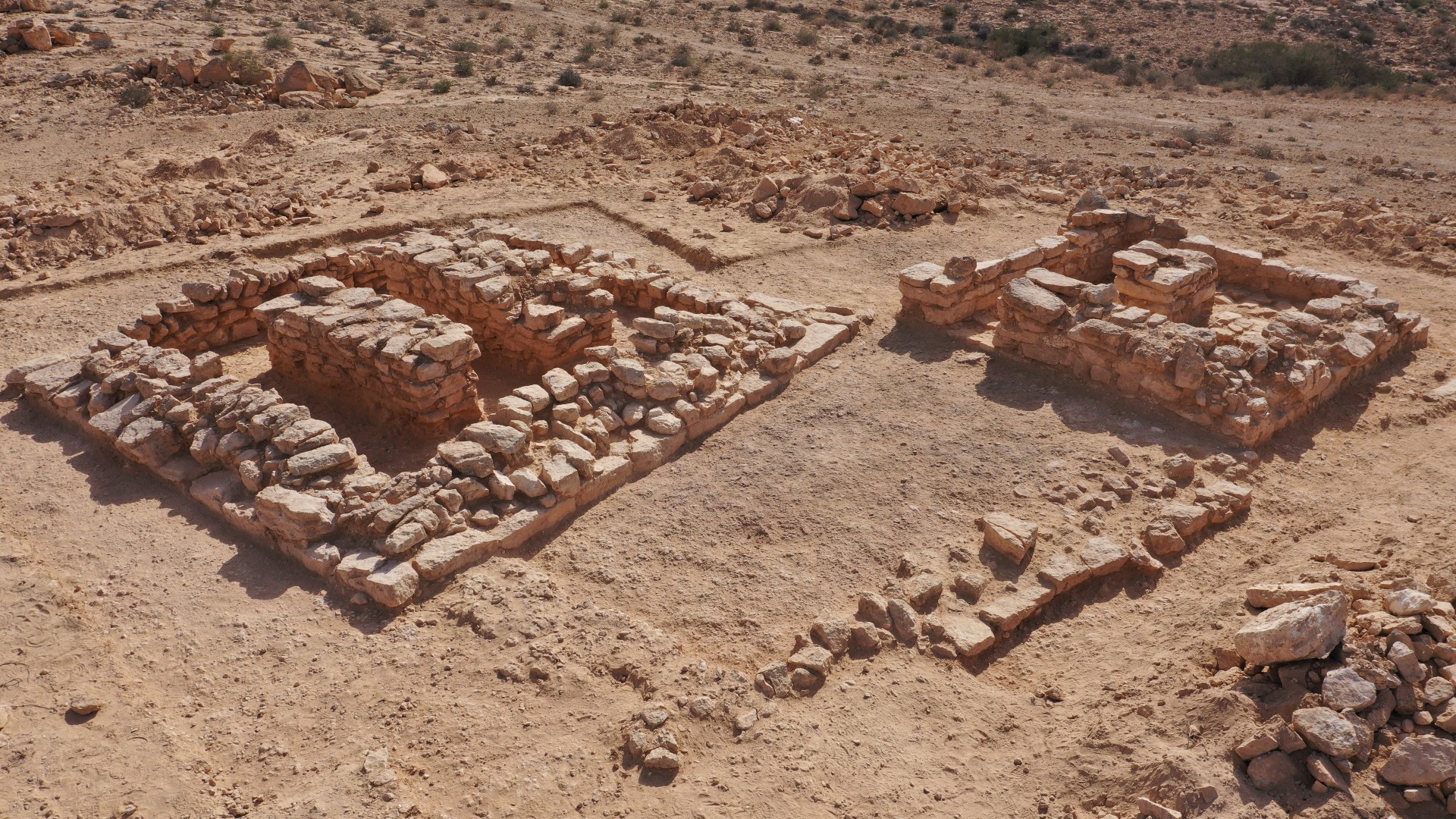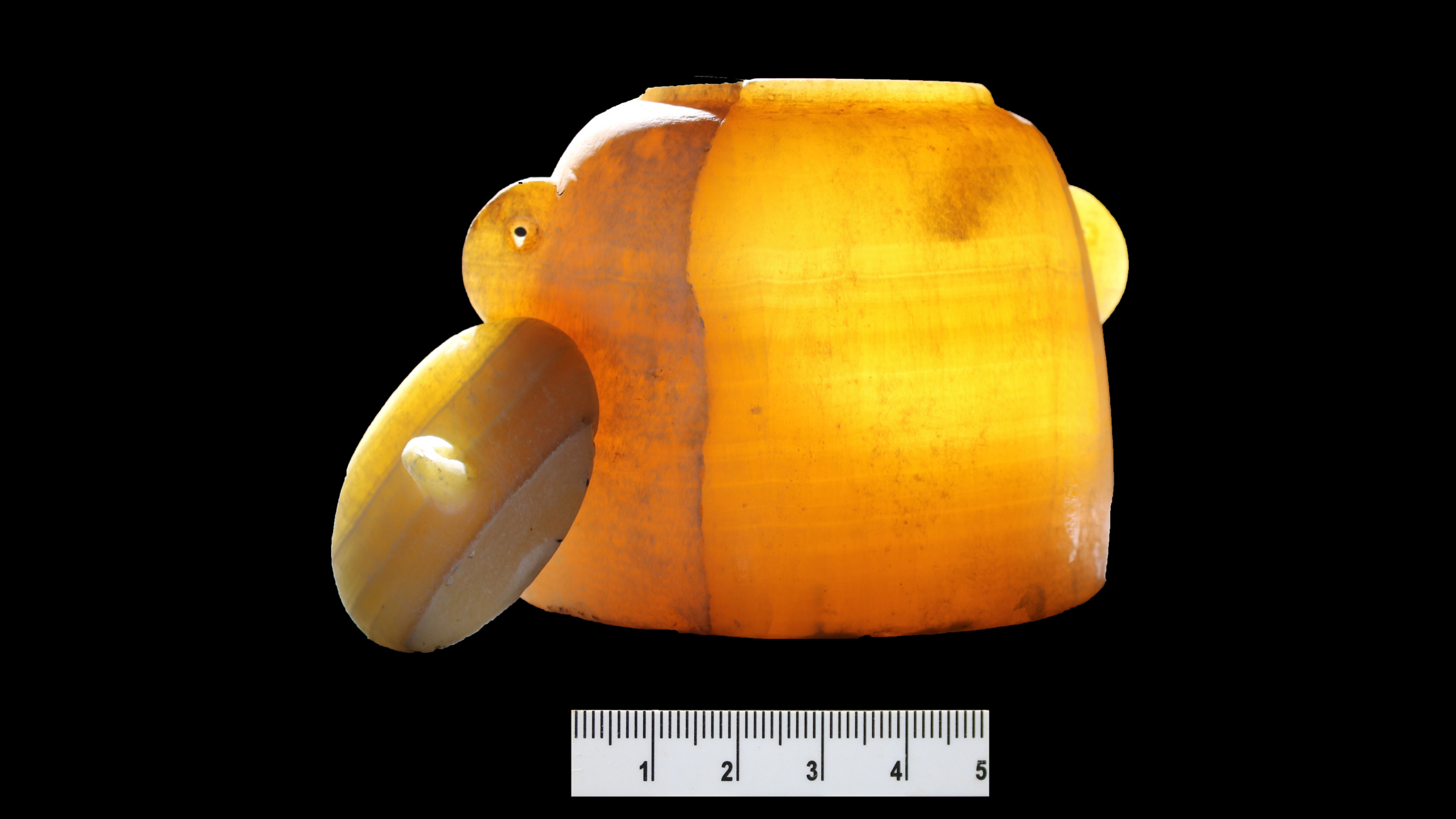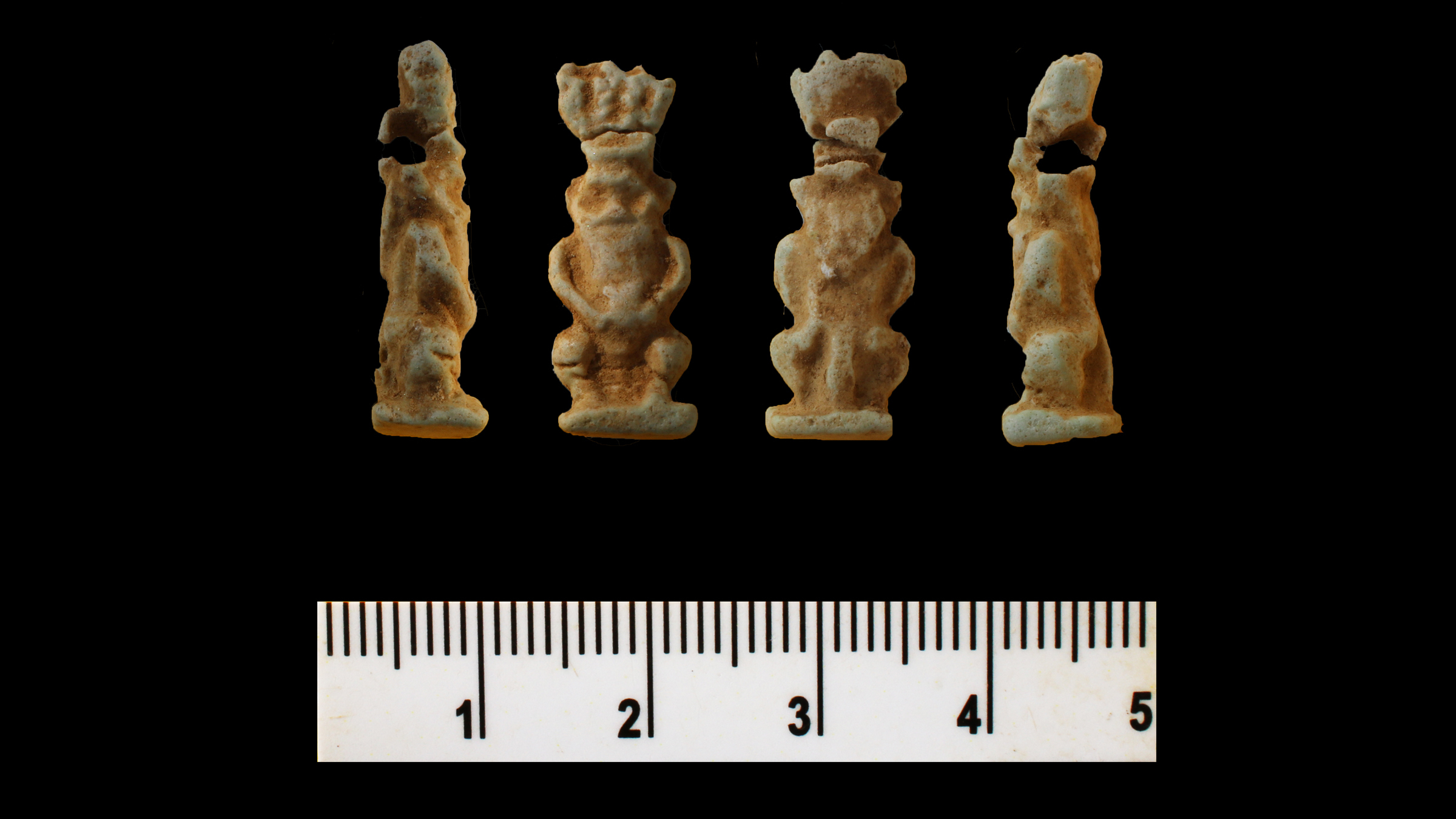
Archaeologists in Israel have unearthed a burial site holding dozens of skeletons from 2,500 years ago — possibly the remains of trafficked women — in the heart of the Negev desert in southern Israel.
The two elaborate tombs, which together contain at least 50 skeletons, lie at an ancient crossroads that caravans of traders from different cultures once traversed to swap goods and other resources, according to a study published June 9 in Tel Aviv: Journal of the Institute of Archaeology of Tel Aviv University.
The team found the burials in 2021 during an archaeological survey ahead of a construction project for a water pipeline in the region. Unlike the mostly rounded burial sites commonly found in the Negev — known as tumuli — these two newly uncovered chambers are square, with one measuring 23 by 23 feet (7 by 7 meters) and the other 15 by 15 feet (4.5 by 4.5 m). Their location is also noteworthy, the researchers said.
"These kinds of tombs have never been discovered in the region until now and they are not associated with any kind of settlement," study co-author Tali Erickson-Gini, an archaeologist at the Israel Antiquities Authority, told Live Science in an email. Study co-author Martin David Pasternak, a research archaeologist at the Israel Antiquities Authority and doctoral candidate at Ben-Gurion University of the Negev, was the site's main excavator.
The tombs are located at a crossroads of two important ancient tracks leading from west to east, from Egypt to the Wadi Arabah (an area of the Negev located south of the Dead Sea basin), southern Jordan and the Arabian Peninsula.
Related: Vast cemetery of Bronze Age burial mounds unearthed near Stonehenge
Death and burial along ancient roads in the harsh desert, "whether due to violence or sickness, was not uncommon," Erickson-Gini said. It's possible these individuals were buried there because, in ancient times, crossroads were seen as places of "sanctity," with ritual and religious importance, the authors wrote in the study.
The tomb contained a trove of artifacts from different cultures across the southern Levant (the region around the eastern Mediterranean), southern Arabia and Egypt that date to the late Iron Age and early Persian Achaemenid period (seventh century B.C. to fifth century B.C.).
Some of the objects suggest that the human remains discovered at the site were of adult women, the researchers said, although further analysis is needed to confirm this. For example, the tombs contained copper-alloy and iron jewelry, ceramic vases and Cypraea shells from the Red Sea, which Egyptian women sometimes used as talismans — objects used to ward off evil and bring good fortune. The archaeologists also uncovered incense holders and an alabaster tray — remnants of the once-famous trade of myrrh and frankincense across this region. Some of the incense containers were intentionally broken, likely as part of a burial ritual, the researchers said.

The tombs may help to fill in an important gap in the archaeological record of the region.
"We know a lot about the trade between southern Arabia and the southern Levant during the mid-first millennium BCE, but most of our evidence still comes from the written record, particularly from sources of Greco-Roman times that date much later than this burial," Juan Manuel Tebes, a historian at the Pontifical Catholic University of Argentina who wasn't involved in the research, told Live Science in an email. "This excavation is vastly expanding our knowledge about this ancient trade network."

Who was buried in the tombs?
The study's authors suggested that the human remains may be of trafficked women who were purchased in Gaza or Egypt and destined for Arabia, where they likely would have been sold as brides or sacred prostitutes who took part in rituals, though more evidence is needed to substantiate this idea. Ancient records, including Minaean inscriptions found in Yemen, have documented the practice of trafficking women for ritual prostitution in this region, according to the study.
The positions of some of the human remains within the tombs indicate that the skeletons may have been moved from their original location to make room for additional burials, suggesting that the site may have been used for a long time, according to the study.
The tomb system has been preserved and restored so archaeologists can continue to study it, according to Israeli news site Haaretz.
Editor's note: Updated at 12:46 p.m. July 7 to include Martin David Pasternak, who is the study's co-author.







